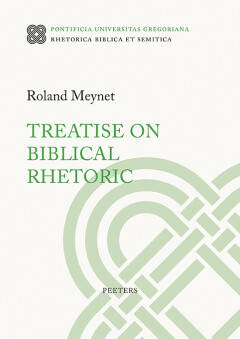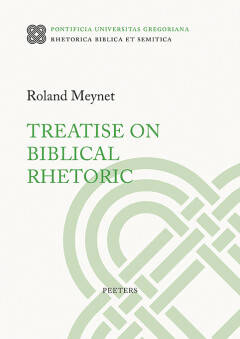
Bedankt voor het vertrouwen het afgelopen jaar! Om jou te bedanken bieden we GRATIS verzending (in België) aan op alles gedurende de hele maand januari.
- Afhalen na 1 uur in een winkel met voorraad
- In januari gratis thuislevering in België
- Ruim aanbod met 7 miljoen producten
Bedankt voor het vertrouwen het afgelopen jaar! Om jou te bedanken bieden we GRATIS verzending (in België) aan op alles gedurende de hele maand januari.
- Afhalen na 1 uur in een winkel met voorraad
- In januari gratis thuislevering in België
- Ruim aanbod met 7 miljoen producten
Zoeken
Treatise on Biblical Rhetoric
Second Complete English Edition. Translation of the Third Revised and Enlarged Edition
R Meynet
€ 301,95
+ 603 punten
Omschrijving
The fruit of a long history dating back at least more than three hundred years and, on the part of its author, of some fifty years of research and analysis of texts of both the Old and New Testaments, this work sets out to present systematically and in depth the principles of biblical rhetoric. Belonging to the cultural area of the Semitic world, biblical rhetoric differs from Greco-Latin rhetoric, of which the modern West is the direct heir. However, it applies not only to texts written in Hebrew or Aramaic, but also to the Greek books of the Old and New Testaments. Knowledge of the laws of this specific rhetoric is essential for a better understanding of the biblical writings. The Treatise is divided into three parts: Composition, Context and Interpretation. The first part sets out the relationships between all the linguistic elements used to construct texts, followed by the successive levels of their organisation, afterwards the figures of composition and finally the rules of rewriting. The part devoted to context looks first at intratext, and even more importantly at intertextual relationships, before examining the function of the centre of concentric compositions and proposing rules for rewriting synoptic texts. The third part first shows the usefulness of biblical rhetoric for establishing the text, its translation, its divisions and its punctuation. A presentation of the five hermeneutical rules for interpreting texts based on their composition follows. Next comes the role of intertextuality, which is often decisive in shedding light on these texts. The section concludes with a reflection on the gift of interpretation. The first chapter traces the "history" of the discovery of biblical rhetoric. It is indeed indispensable to know the authors of the research and discoveries we have inherited. This work is a grammar; it is accompanied by the book Exercises of Biblical Rhetorical Analysis, which provides practical exercises for anyone who desires to learn the craft.
Specificaties
Betrokkenen
- Auteur(s):
- Uitgeverij:
Inhoud
- Aantal bladzijden:
- 756
- Taal:
- Engels
- Reeks:
- Reeksnummer:
- nr. 52
Eigenschappen
- Productcode (EAN):
- 9789042954847
- Verschijningsdatum:
- 20/08/2025
- Uitvoering:
- Paperback
- Formaat:
- Trade paperback (VS)
- Afmetingen:
- 170 mm x 240 mm
- Gewicht:
- 1075 g

Alleen bij Standaard Boekhandel
+ 603 punten op je klantenkaart van Standaard Boekhandel
Beoordelingen
We publiceren alleen reviews die voldoen aan de voorwaarden voor reviews. Bekijk onze voorwaarden voor reviews.









